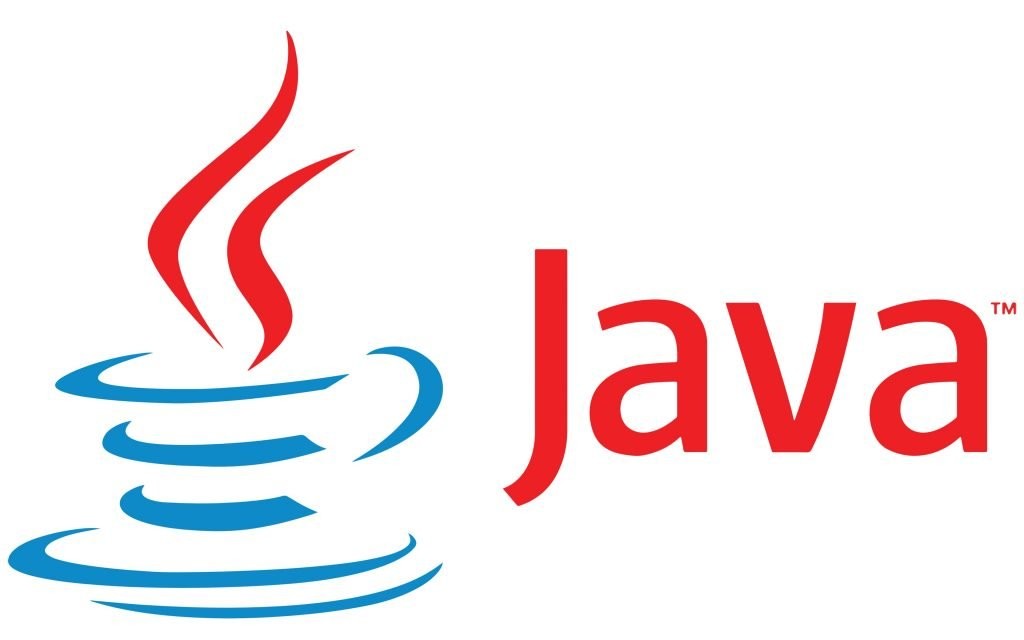Last Updated on July 26, 2024
There are two main types of programming paradigms: Imperative and Declarative.
In the imperative approach, you would tell the program step by step instructions to achieve some goal, while in the declarative approach, you would simply describe the desired outcome and the computer would then use its built-in knowledge and algorithms to figure out how to achieve the same goal.
In the second case, the computer still follows a set of instructions under the hood, but those instructions are generated based on the high-level declaration you provided. This allows you to focus on what you want rather than how to achieve it, making the code more concise and easier to understand.
While the declarative paradigm focuses on describing what you want to achieve rather than how to achieve it, the underlying computer still executes the program in an imperative way. This is because imperative programming is the native language of computers, and it is the most efficient way for them to execute instructions.
We will give a brief description of these two main types programming paradigm, analyze the main subcategories in each of them and see how Java language fits in the picture.
Imperative Programming Paradigm
One of types of programming paradigms is the imperative paradigm, also known as the procedural, is the oldest and most widely used approach to programming. It’s like giving step-by-step instructions to a computer, telling it what to do and how to do it, one command at a time. It’s called “imperative” because as programmers we dictate exactly what the computer has to do, in a very specific way.
In this approach the programmer directly manipulates the state of variables and objects throughout your program using assignments, loops, and conditionals. Code is generally executed sequentially, line by line, one instruction after another. This makes it easy to follow the logic but can lead to complex control flow with nested loops and conditionals.Programmers explicitly define the steps of the program, focusing on the “how” rather than just the “what”.
Imperative approach is familiar and intuitive, it gives control over the execution such as: resource allocation, memory management, or low-level hardware interaction.This kind programs can be highly optimized for specific tasks, leading to excellent performance in resource-intensive situations in applications like game development, scientific computing, and embedded systems.
Tracing errors is often easier because the logic flow is explicit and direct.
Two main subcategories are procedural and object oriented programming.
Procedural Programming Paradigm
Procedural programming paradigm is derivation of imperative programming, adding to it the feature of functions (also known as “procedures” or “subroutines”). It is a type of programming where we construct programs using procedures or subroutines.
While Java isn’t purely procedural, it shares many characteristics with procedural languages:
- Focus on state changes: Variables and objects directly change state throughout the program using assignments, loops, and conditionals. This manipulation is key to achieve the desired outcome.
- Sequential execution: Code is typically executed line by line, one instruction after another. This makes the logic flow easy to follow but can lead to complex control flow with nested loops and conditionals.
- Emphasis on algorithms: You explicitly define the steps and logic your program takes to solve a problem, focusing on the “how” rather than just the “what”. You’re telling the computer the recipe to follow.
Object-Oriented Programming Paradigm
Object-Oriented Programming(OOP)extends procedural programming concepts in a way that focuses on organizing code around objects. Instead of focusing on the sequence of instructions, like in the procedural paradigm, OOP emphasizes building self-contained entities that encapsulate both data and functionality.
It revolves around objects that encapsulate data (attributes) and behavior (methods). This modularizes and hides implementation details, promoting code reuse and maintainability.
Objects interact with each other by sending messages, triggering specific methods and behaviors instead of directly modifying each other’s state. This encourages loose coupling and reduces dependencies.
OOP allows defining relationships between objects through inheritance, where subclasses inherit attributes and methods from parent classes. Polymorphism allows treating different objects in a similar way based on their shared interface, promoting flexibility and code reuse.
Some of the improvements of OOP over procedural paradigm are:
- Modular code: Objects are independent units, making code easier to understand, maintain, and reuse.
- Improved data protection: Encapsulation protects sensitive data from external modification.
- Promotes code reuse: Inheritance and polymorphism allow you to leverage existing code and build upon it for different purposes.
- Increased flexibility: Objects can adapt their behavior based on the context, leading to more dynamic and versatile programs.
- Easier maintenance: Changes to one object are less likely to impact other parts of the code.
Java is considered an object-oriented language due to its strong emphasis on objects, classes, inheritance, and other OOP principles. However, due to its inclusion of primitive data types, static methods and members, relying heavily on loops and conditionals to control program flow and state changes, it doesn’t fully adhere to the strict definition of a pure OOP language.
Declarative Programming Paradigm
While the imperative paradigm offers valuable benefits, it also has some shortcomings that become more apparent as projects grow in size and complexity.
Some key limitations include: difficulty in handling complex logic, lack of modularity and code reuse, error-proneness and side effects, limited expressiveness and abstraction and scalability challenges
In an attempt to eliminate the above limitations, a declarative approach emerged.
Another one of types of programming paradigms is the declarative programming. It is the direct opposite of imperative programming in the sense that the programmer doesn’t give instructions about how the computer should execute the task, but rather on what result is needed.
In this approach, programmers specify what the data should look like, what relationships exist between elements, or what rules should be followed. You don’t dictate the specific steps or algorithms needed to get there.
Data is often treated as immutable, meaning programmers don’t directly modify existing values. Instead, create new versions with the desired changes, leaving the original intact. This leads to predictable and easier-to-reason-about code.
Functions have no side effects (modifying variables or states outside function) and always return the same output for the same input. This ensures consistent behavior and simplifies debugging and testing.
Two main subcategories are functional and reactive programming.
Functional Programming Paradigm
Functional programming(fp) is a subset of the declarative programming paradigm.
It is all about functions (procedures with a specific set of functionalities) and they can be assigned to variables, passed as arguments, and returned from other functions.
Here are the key pillars of functional programming:
Pure functions
These are the building blocks of FP. They always return the same output for the same input, regardless of the execution context or external state. This makes them predictable and easier to reason about, leading to more reliable and maintainable code.
Immutability
Data in FP is treated as unchangeable. Once created, it can’t be directly modified. Instead, you create new versions of data with the desired changes, leaving the original intact. This simplifies sharing and avoids unexpected side effects.
Focus on values
Instead of focusing on how things are done (imperative), FP emphasizes what the result should be (declarative). You describe what you want to achieve, and the functions take care of the how. This makes code more expressive and concise.
Recursion
FP heavily relies on recursion, where a function calls itself with smaller inputs until it reaches a base case. This can lead to elegant and concise solutions, often avoiding the need for loops.
Higher-order functions
these functions take other functions as arguments or return functions as results. This allows for powerful abstractions and composability, making code more reusable and modular
Due to its focus on data immutability and function encapsulation (functions encapsulate behavior), function statelessness (not relying on external state) and composability (functions can be combined to offer complex data transformations), it offers several advantages over traditional imperative programming, particularly when dealing with complex or concurrent systems.
While not a silver bullet, FP offers a powerful paradigm for building robust, reliable, and scalable software, especially in the age of concurrency and complex systems. However, it also requires a different mindset and may not be suitable for every problem.
If you’re facing complex problems with concurrency, data manipulation, or need to build reliable and modular systems, FP is definitely worth exploring. Its benefits in terms of code clarity, maintainability, and resilience can be significant, even if you don’t adopt it for your entire codebase.
Functional-like features in Java
- Lambda expressions: These anonymous functions allow for concise and declarative-like code, especially for event handling and data manipulation.
- Streams API: This API provides a powerful way to work with data sequences in a functional style, using operations like map, filter, and reduce.
- Collections: Some collection methods like sort and filter appear to describe what you want done with the data without explicit iteration.
Reactive Programming Paradigm
Reactive programming is one of types of programming paradigms where the focus is on developing asynchronous and non-blocking components.
The roots of reactive programming can be traced back to 1972, when a programming language called Smalltalk was invented. Its actor model, self-contained entities that communicate asynchronously through messages, provided a foundation for event-driven and responsive applications.
In the 1990s, Haskell, a purely functional language, heavily influenced the development of reactive libraries. Its emphasis on immutability, streams, and functional abstractions aligned perfectly with the reactive paradigm.
While these languages played a significant role, it’s vital to remember that the term “reactive programming” itself wasn’t widely used until the 2010s. Libraries like RxJava (Java/Kotlin) and RxJS (JavaScript) emerged as early adopters of the standardized Reactive Streams API (2013), propelling the widespread adoption of the paradigm.
Back in the year 2013, a team of developers, lead by Jonas Boner, came together to define a set of core principles in a document known as the Reactive Manifesto. This is what laid the foundation for an architecture style to create Reactive Systems. Since then, this manifesto has gathered a lot of interest from the developer community.
Reactive Streams
Reactive Streams is an initiative to provide a standard for asynchronous stream processing with non-blocking back pressure. this encompasses efforts aimed at runtime environments (JVM and JavaScript) as well as network protocols.
Java itself isn’t inherently a reactive language, but it offers powerful libraries and frameworks that enable reactive programming(RxJava, Akka Streams, Spring WebFlux..). This means you can leverage the benefits of reactive programming within your Java codebase, even though the language itself doesn’t enforce the paradigm.
You can mix imperative and reactive styles within your Java code, using reactive patterns for specific tasks where they benefit the most, such as: Internet of Things (IoT) and Microservices architectures, dashboards, financial trading platforms and other real time applications.
If you’re building systems that require high responsiveness, scalability, and resilience, exploring reactive Java and its libraries can be immensely rewarding.
Conclusion
With focus on state changes, sequential execution and focus on algorithms Java exhibits properties of procedural paradigm.
By encapsulating data and behavior into objects, data abstraction and inheritance it exhibits the principles of OOP.
Java offers libraries and frameworks that introduce functional programming concepts like lambda expressions and streams.
And finally, with reactive streams initiatives that are incorporated in Java specifications there are frameworks that provide reactive paradigm implementation to Java.
Java’s multi paradigm nature, encapsulating both types of programming paradigms, makes it a versatile and powerful language. By understanding the strengths and weaknesses of each paradigm and applying them effectively, you can develop robust, maintainable, and efficient software systems.

